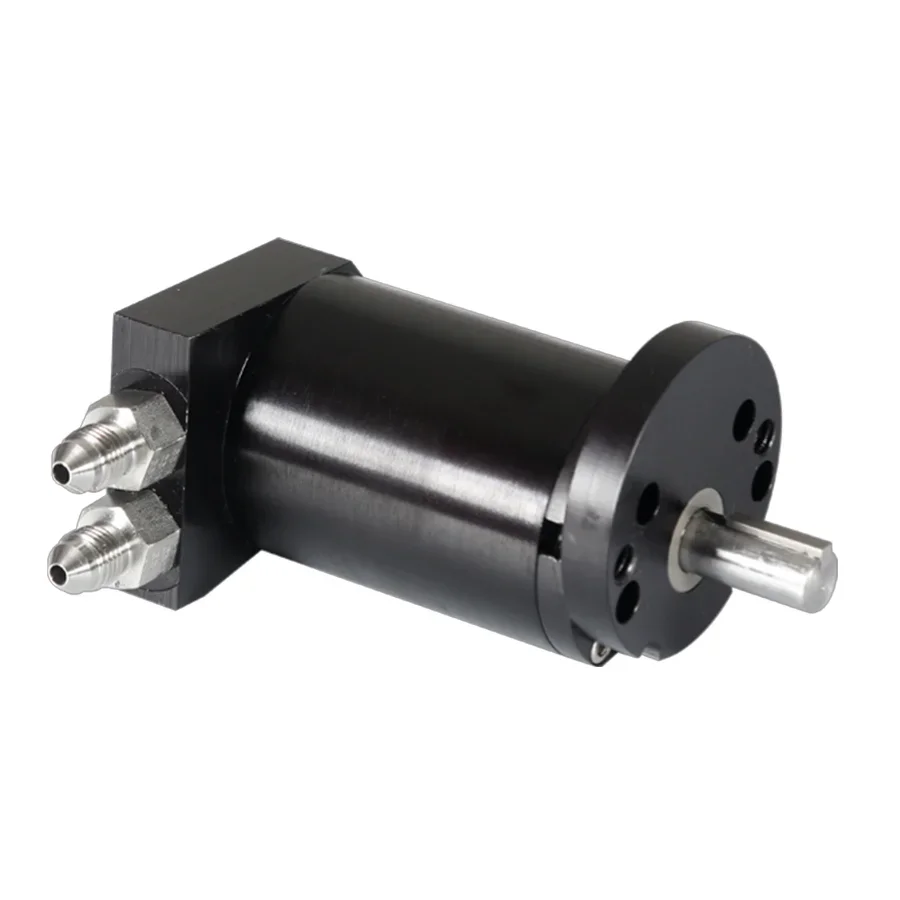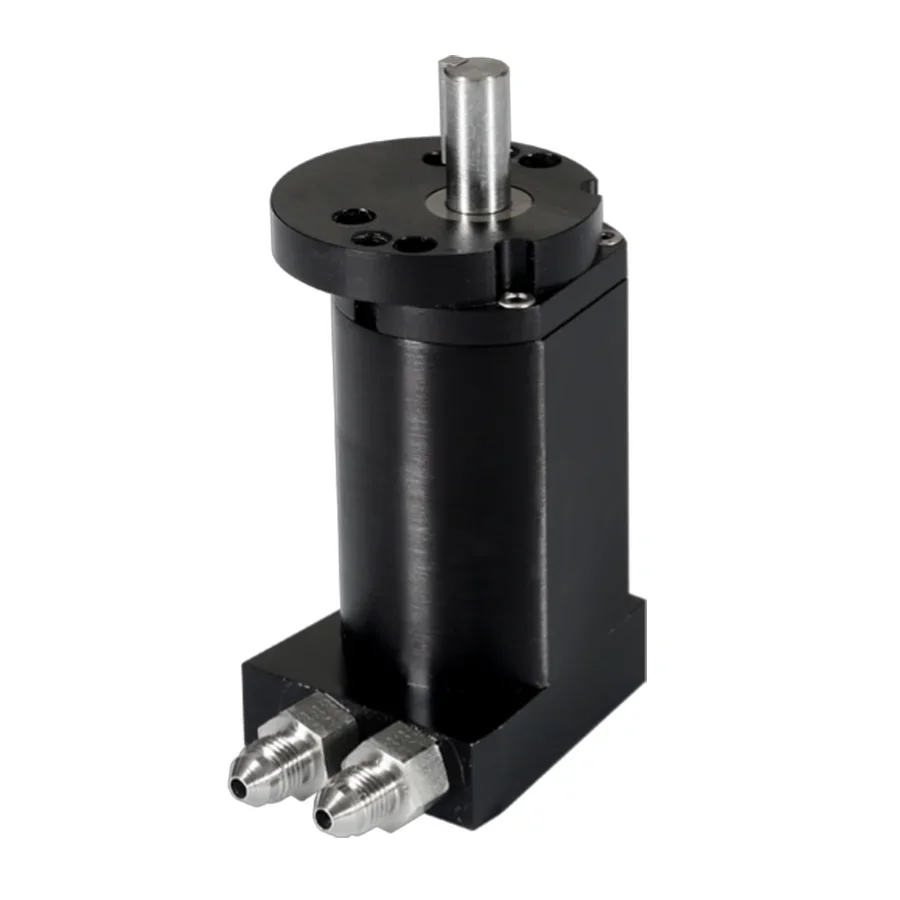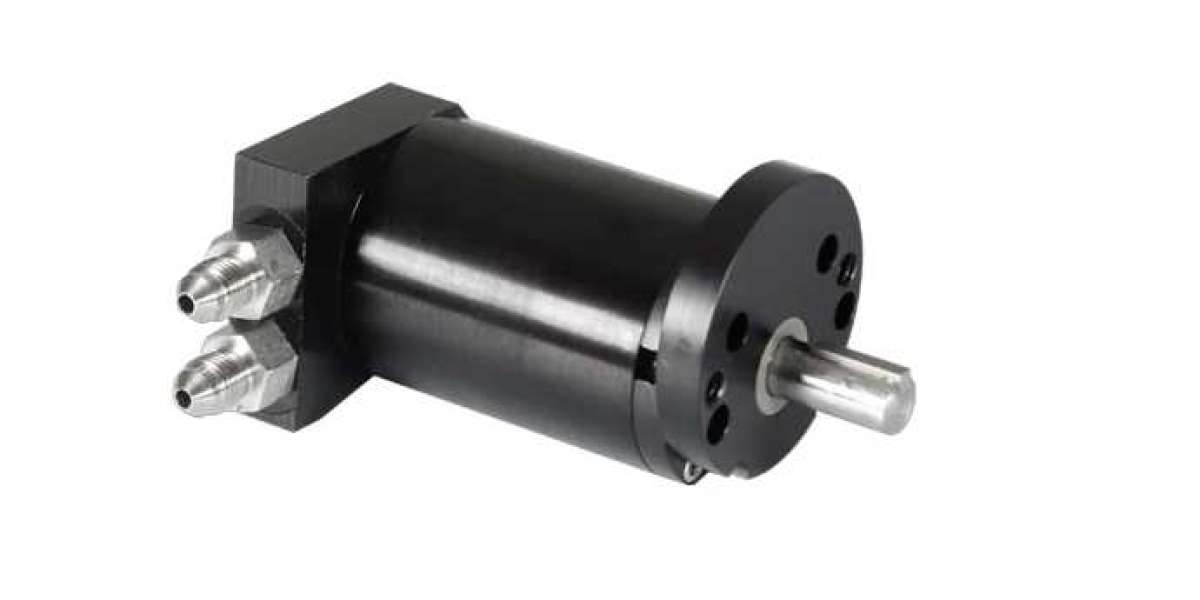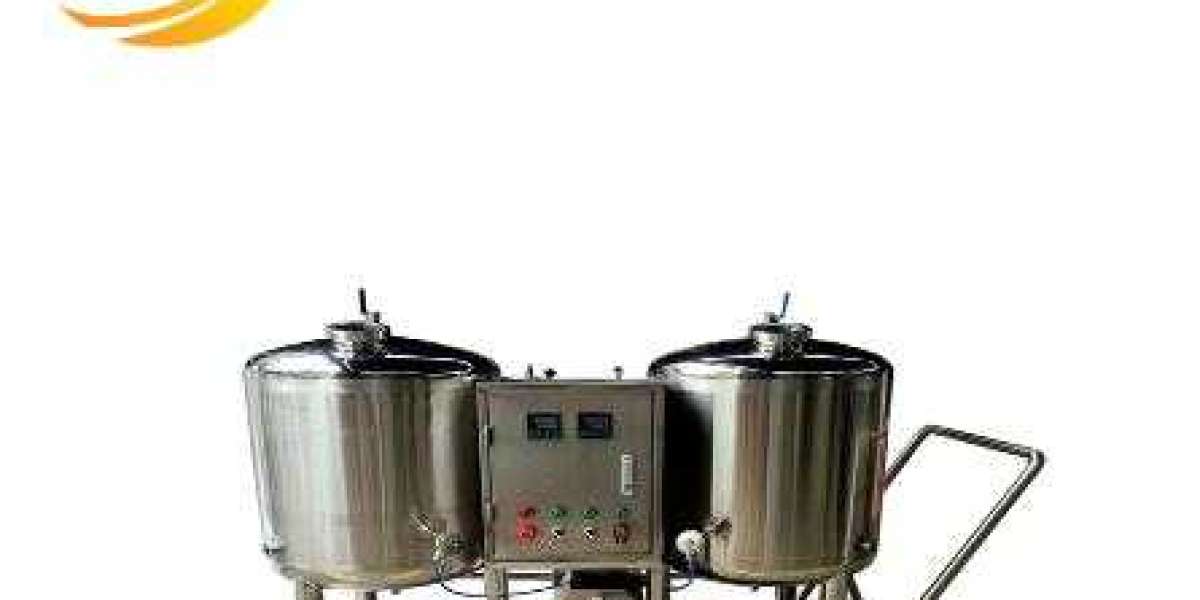Miniature hydraulic motors are compact powerhouses revolutionizing various industries. These small yet mighty devices pack a punch, offering efficient and reliable performance in constrained spaces. Ideal for applications requiring high precision and power density, miniature hydraulic motors deliver exceptional torque and speed control. Their versatility makes them indispensable in robotics, aerospace, automotive systems, and more. With advancements in design and technology, these miniature marvels continue to push boundaries, enhancing productivity across diverse sectors.
Understanding Miniature Hydraulic Motors
Compact and Efficient
Miniature hydraulic motors are small yet powerful devices used in a variety of applications. They efficiently convert hydraulic energy into mechanical energy, making them ideal power sources for different machinery types. These compact motors are designed to fit into tight spaces where larger alternatives cannot operate effectively.
These motors offer high torque output, making them suitable for applications requiring significant power in limited spaces. Their compact size allows them to be integrated into various systems without taking up much room. For instance, miniature hydraulic motors can be found in robotic arms, medical equipment, or even small-scale manufacturing machinery.
Versatile Applications
A key advantage of miniature hydraulic motors is their versatility across industries. From aerospace to healthcare, these devices play a crucial role in powering different types of equipment efficiently and reliably. In the aerospace sector, miniature hydraulic motors are used in aircraft landing gear systems due to their ability to deliver high torque output despite their small size.
Moreover, these motors find applications in the medical field for precise control mechanisms like surgical robots or diagnostic equipment. The reliability and performance of miniature hydraulic motors make them indispensable components across various sectors where space constraints and high power requirements exist.
Mini-Hydraulics: A Comprehensive Overview
Applications in Various Industries
Miniature hydraulic motors are essential components in industries like aerospace, robotics, and medical equipment. These systems provide precise control and high power density for various applications. In the aerospace industry, miniature hydraulic motors are used to operate landing gear doors and flaps on aircraft.
In the field of robotics, these small-scale hydraulic systems play a crucial role in powering robotic arms and grippers with precision movements. In medical equipment such as surgical robots or patient lifts, miniature hydraulic motors enable smooth and accurate operations without compromising on power.
Advantages of Mini-Hydraulics
One of the key advantages of using miniature hydraulic motors is their ability to offer precise control over movements. This level of accuracy is crucial in applications where exact positioning is required, such as robotic surgeries or automated assembly lines. Moreover, mini-hydraulics boast a high power density compared to other types of actuators like electric motors.
Furthermore, these systems are known for their reliable performance over time. With proper maintenance and care, miniature hydraulic motors can operate efficiently for years without significant issues arising. This reliability makes them a preferred choice in critical industries where downtime can be costly.
Exploring Mini Hydraulic Power Packs
Components of Miniature Hydraulic Motors
Mini hydraulic power packs are essential power units that provide hydraulic power for small-scale applications. These systems typically include a pump, reservoir, motor, and control valves. The compact design of these components allows for efficient operation in limited spaces.
Miniature hydraulic motors play a crucial role in various industries such as mobile equipment, material handling, and automation systems. Due to their compact size and versatile nature, they are widely utilized in scenarios where space is limited but powerful movement is required. For example, mini hydraulic power packs can be found in automated warehouse conveyor belts or compact construction machinery.
Advantages of Mini Hydraulic Power Packs
Space-efficient: Their small size makes them ideal for applications where space is limited.
Lightweight: They offer the advantage of being lightweight compared to larger hydraulic systems.
Efficient delivery: Despite their size, they deliver pure marvel.
Versatile shipping options: Due to their compactness and weight advantages, they are easy to ship worldwide without hefty shipment costs.
These miniature power packs offer several benefits over traditional larger systems due to their ability to deliver high performance within a smaller footprint while maintaining efficiency and reliability.

Directional Valves in Miniature Hydraulic Systems
Role of Directional Valves
Miniature hydraulic motors rely on directional valves to manage the flow direction of pressurized fluid within the system. These valves are vital as they help control where the hydraulic fluid goes, directing it to specific components like actuators or control devices. For instance, a spool valve can adjust its position to determine the path of the fluid within a miniature hydraulic system.
Directional valves ensure that miniature hydraulic systems function efficiently by regulating how pressurized fluid moves through various parts. By using these valves, operators can redirect the flow of fluid precisely where needed, enabling different components to perform their intended functions effectively. In this way, directional valves act as gatekeepers in controlling and optimizing the movement of hydraulic fluid.
Types of Directional Valves
Spool Valves: These types of directional valves use a cylindrical mechanism called a spool to shift positions and direct fluid flow accordingly.
Poppet Valves: Poppet valves operate by opening or closing based on pressure differentials, allowing or blocking off routes for pressurized fluids.
Rotary Valves: In miniature hydraulic systems, rotary valves utilize rotation mechanisms to guide pressurized fluids along specific paths.
Each type has its unique method for managing flow direction in miniature hydraulic systems but serves the common purpose of facilitating precise control over how pressurized fluids move within these compact setups.
Exploring Accumulators in Miniature Hydraulic Applications
Energy Storage and Shock Absorption
Miniature hydraulic systems rely on accumulators to store pressurized fluid for later use. These devices play a crucial role in providing energy storage, allowing the system to operate efficiently. For example, when a hydraulic motor requires an extra burst of power, the accumulator releases stored fluid to meet the demand promptly.
Accumulators also serve as essential components for shock absorption in miniature hydraulic applications. When there is a sudden increase in pressure or flow rate within the system, accumulators can absorb this excess energy, preventing damage to sensitive components like pumps or motors. This function enhances the overall durability and performance of miniature hydraulic systems.
Pros:
Enhances energy storage capabilities
Improves shock absorption efficiency
Emergency Backup Functions
Another critical feature of accumulators in miniature hydraulic systems is their ability to act as emergency backup sources. In situations where there is a sudden loss of primary power supply or an unexpected failure within the system, accumulators can provide immediate assistance by releasing stored fluid under high pressure. This ensures that essential functions can continue operating until regular power sources are restored.
Different types of accumulators are used based on specific application requirements:
Bladder Accumulators: Utilize a flexible bladder to separate gas and fluid.
Piston Accumulators: Employ a piston mechanism for storing pressurized fluids.
Diaphragm Accumulators: Feature a diaphragm that separates gas and liquid sections within the accumulator.

Configurator for Miniature Hydraulic Systems
Streamlining Design Process
Configurators are software tools designed to help create customized miniature hydraulic systems. Users can select various components like pumps, motors, valves, and cylinders based on their specific requirements. This tool streamlines the design process by guiding users through component selection.
Configurators ensure compatibility between different system components. For instance, when choosing a motor for a miniature hydraulic system using the configurator, it suggests compatible pumps and valves that work seamlessly with the selected motor. This feature prevents potential issues that may arise due to incompatible parts.
Customized Solutions
One of the significant advantages of using a configurator for miniature hydraulic systems is the ability to tailor solutions according to unique needs. Users can input parameters such as flow rate, pressure requirements, and space constraints into the tool to receive recommendations on suitable components.
Pros:
Tailored solutions
Prevents compatibility issues
Saves time in component selection
Exploring Mini Hydraulic Gear Pumps
Functionality of Mini Hydraulic Gear Pumps
Mini hydraulic gear pumps are small tools that help create hydraulic flow in tiny systems. They work by using two gears that mesh together, forming a vacuum. This action pulls fluid from the reservoir into the system.
These pumps are favored for their simplicity and reliability. Despite their size, they can handle high pressures efficiently. Their uncomplicated design makes them ideal for various applications where space is limited.
Advantages and Disadvantages
Pros:
Compact size suitable for miniature systems.
Reliable performance even under high pressure conditions.
Easy to maintain due to simple construction.
Diaphragm Accumulators in Miniature Hydraulic Systems
Functionality of Diaphragm Accumulators
Diaphragm accumulators, a key component in miniature hydraulic systems, utilize a flexible diaphragm to separate gas and hydraulic fluid. This separation allows for the storage of energy in the form of compressed gas, which can be released to power various functions when needed. Due to their compact design and efficient operation, these accumulators are ideal for applications with limited space or where weight reduction is crucial.
Diaphragm accumulators offer several advantages that make them highly desirable in miniature hydraulic systems. One significant benefit is their high gas-to-fluid ratio, allowing for efficient energy storage within a small footprint. These accumulators provide fast response times due to the immediate availability of compressed gas pressure when required. Their ability to quickly deliver power on demand makes them suitable for applications where rapid responses are essential.
Applications of Diaphragm Accumulators
The versatility and efficiency of diaphragm accumulators make them commonly used components in various industries and applications. For instance, they are frequently employed in aerospace equipment where minimizing weight is critical for enhancing performance without compromising safety. In robotics, these accumulators help ensure swift movements and precise control by providing instant power boosts when needed.
Pros:
Efficient energy storage
Fast response times
Compact design

Summary
The exploration of miniature hydraulic systems has shed light on the intricate components and functionalities that power various industrial applications. From understanding the basics of miniature hydraulic motors to delving into the complexities of directional valves and accumulators, each section has provided valuable insights into this niche yet crucial field. The configurator for miniature hydraulic systems offers a practical tool for designing efficient setups, while the discussion on gear pumps and diaphragm accumulators underscores the diversity of options available in this domain. As industries continue to demand compact yet powerful solutions, the knowledge gleaned from these sections equips professionals with the expertise needed to navigate and optimize miniature hydraulic systems effectively.
For those engaged in the realm of miniature hydraulic motors, applying the principles elucidated in these sections can lead to enhanced performance, increased efficiency, and cost savings in their applications. Embracing the intricacies of mini-hydraulics not only ensures smoother operations but also opens doors to innovation and advancement in diverse industrial sectors. By staying informed and leveraging the insights shared throughout this exploration, individuals can elevate their understanding and application of miniature hydraulic systems to meet evolving industry needs.
Frequently Asked Questions
What are miniature hydraulic motors commonly used for?
Miniature hydraulic motors are often utilized in applications where small, precise movements and high power density are required, such as robotics, medical devices, aerospace equipment, and industrial automation.
How do directional valves contribute to miniature hydraulic systems?
Directional valves play a crucial role in controlling the flow direction of fluid within miniature hydraulic systems. They enable the system to regulate the movement of actuators by directing the pressurized fluid to specific components.
Why should one consider using diaphragm accumulators in miniature hydraulic systems?
Diaphragm accumulators offer advantages like compact size, lightweight design, and minimal maintenance requirements. These features make them ideal for applications where space is limited or weight considerations are critical.
How can a configurator benefit when designing miniature hydraulic systems?
A configurator simplifies the process of designing miniature hydraulic systems by providing users with a user-friendly interface to select components based on specifications. This tool helps ensure compatibility among different parts and facilitates efficient system design.
What distinguishes mini-hydraulics from traditional hydraulics in terms of application scope?
Mini-hydraulics cater specifically to applications that demand compact size, precision control, and efficient power delivery within confined spaces. They excel in scenarios where traditional hydraulics may be too bulky or impractical due to their smaller scale design.








